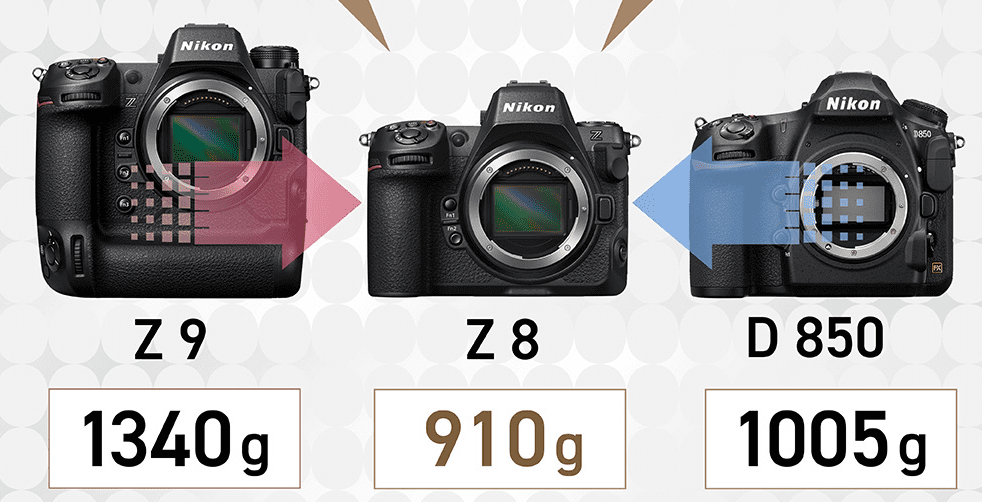
We will always find things to complain about.
When I recently saw that Nikon had filed patents for their flagship cameras of the future, the D6, D7, D8 and D9, it got me to thinking. What are those cameras possibly going to look like?
I don’t think anyone could have predicted at the start of our digital journey that we’d travel so far, so fast.
The Nikon D1 was the first professional Nikon Flagship Digital which came out in 1999, with 2.7 megapixels, ISO up to 1600 and a $5500 price tag then (which is about $7800 adjusted for inflation today) which was considerably less than the competition. It was good.
Fast forward 16 years and take a look at the D5. Almost 21 megapixels with an ISO range from 100 to over 3 million in H5 Mode…What!? The D5 has the best AF System of any camera I’ve ever used.
It might be another 16 years before the D9 comes out and what will it be like?
I can’t wait to find out, but I doubt anyone can predict accurately what it will be.
What do we really need that we don’t have now? Obviously there’s a trend toward down-sizing. How big will Nikon’s flagship be then? How many megapixels? How much better will the high-ISO capability be?
Autofocus is super-fast on the D5. But autofocus is too important for me to let the camera do on its own. Which is why I have avoided systems like 3D and Auto Area where the camera takes over and focuses on what it thinks you want in focus.
But even those systems have improved to the point that I’m giving them another look on my D5 and D500. The Nikon 1 and the upcoming DL Compacts from Nikon work really well in auto-area, locking on to what I want in focus without my guidance. It gets me.
As a back button auto-focuser the one thing I still find problematic at times is moving the focus points. Back in the 90’s when I was working as a newspaper photographer I remember Canon colleagues showing off their new EOS Film SLR with something called “Eye Control”.
Essentially it let you move AF points by tracking eyeball movements; you just look at the point you want to select and it’s selected. Wow. In retrospect, how great was that? Though far from perfect, it worked much of the time. I wonder why manufacturers didn’t run with this technology and continue to improve it.
Maybe such a system will be in the D9? We shall see.
The iPhone is the most popular camera in the world today. Companies like Nikon continue to innovate but the bulk of their revenue doesn’t come from flagship models. If there truly is a paradigm shift going on in photography, flagship cameras of tomorrow may not be too different from any other camera. The bottom line is, I’m comforted by the thought that no matter how amazing and easy the camera becomes, it’s the vision of a photographer that will create a strong image. And there will always be a need for strong images.
What do you think the Nikon D9 will look like?












No more packing a bag of heavy lenses. The camera of the future won’t use a lens like we have today. Sensors will capture the light in the scene and then software will reconstruct the scene digitally.
What the heck, here goes. 1) modular sensors so I can put in a low light sensor (36mp), a landscape sensor (128mp), an action sensor (54mp) as needed…..you said 16 years from now, right? So, I’ll assume different mp levels than today and a processor to deal with them. 2) 1TB of built in memory. Goodbye SD cards, and the 1TB built-in memory will be mirrored for redundancy and also modular so it can be replaced, upgraded, etc…or people can purchase multiple built memory modules if they like. 3) Android and/or iOS style operating system, with wireless and 4G/LTE capacity, as well as bluetooth. This camera has to be connected to the world directly, as well as any other devices like computers or what not. Also, this will allow for the downloading not just of social media apps, but editing apps so editing can happen live action right there in the camera. In fact, we should be able to back up directly to the cloud from the camera if we choose. It’s likely this camera should have a powerful processor as well as good amount of RAM. 4) LCD display that is touch screen and pivots and is of the highest quality possible, needs to be able to pinch and zoom and all the tricks you can do on the equivalent smartphone. 5) This camera is mirrorless, but has the focus capacity superior to anything we have today, by far. And well, the frame rates and all that speed stuff will be out of sight and almost a moot point because of whatever follows 4K video/photo. 6) And…I want to say that the camera might have multiple sensors? How about that idea? I think iPhone 7 plus is onto something. That should do it…haha. Oh, and it should weigh no more than what a D750 weights today, why not? Actually it should be smaller and weigh less, after all 16 years is an eternity for technological advancement!
Steve, there are so many innovative and strong ideas here…modular sensors has been something talked about but I guess frowned upon because manufacturers wanted you to keep upgrading the whole package and not just the sensor…but 16 years from now things will be very different. Love the idea of shoot and it’s already stored and backed up. Lets see how many of these come true. Meet you back here in 2032…